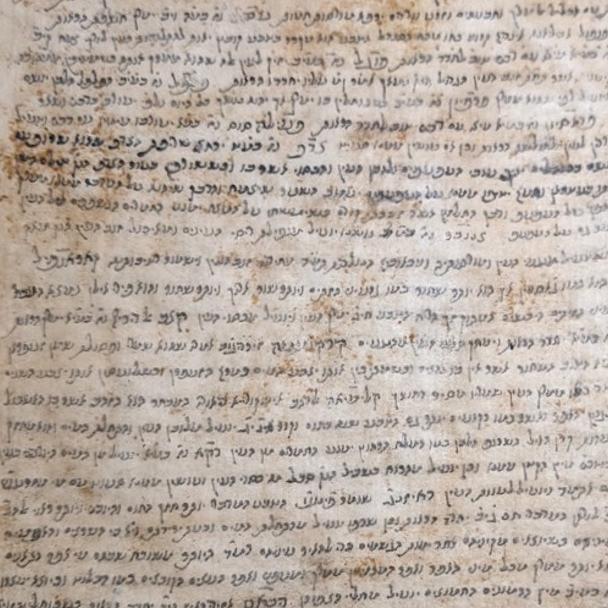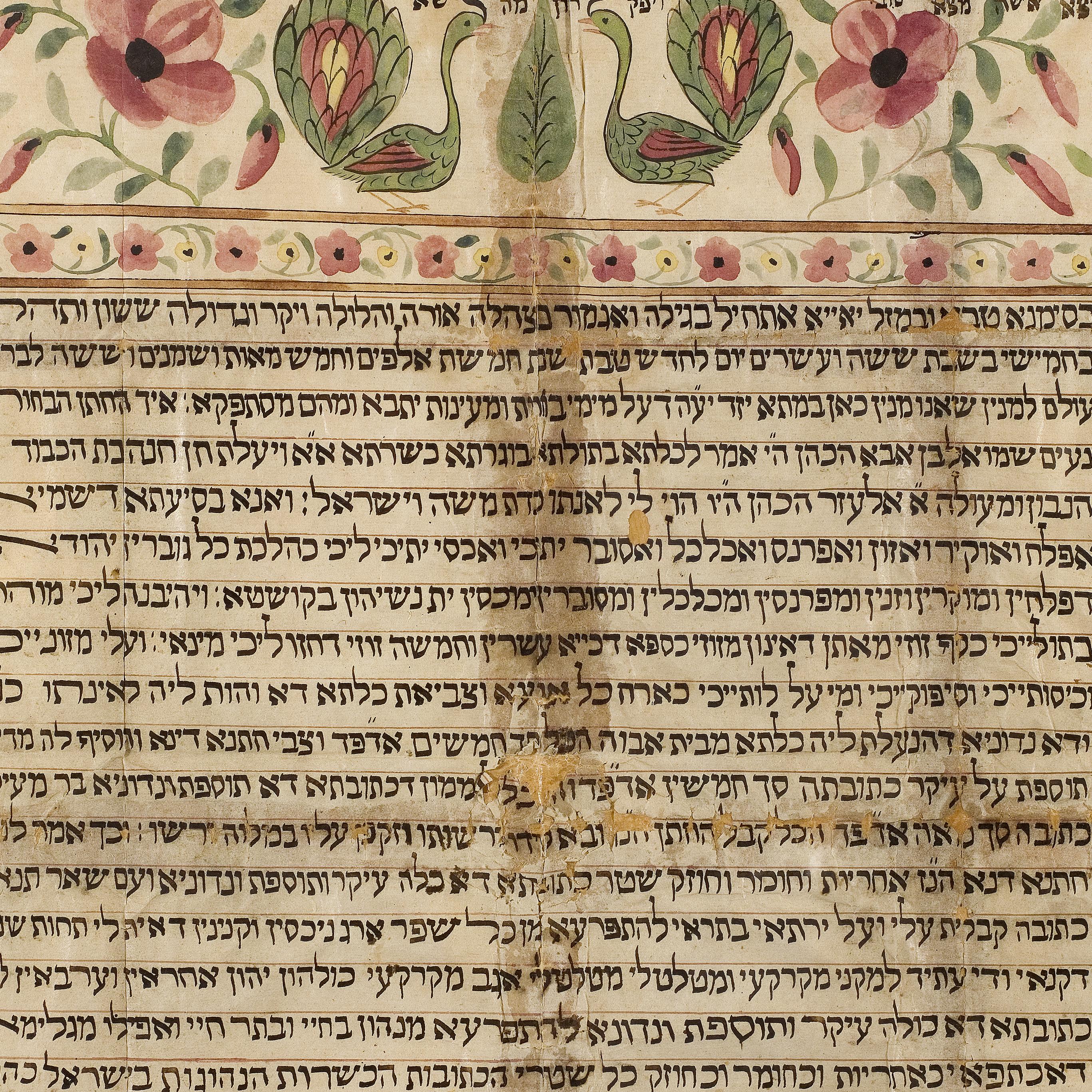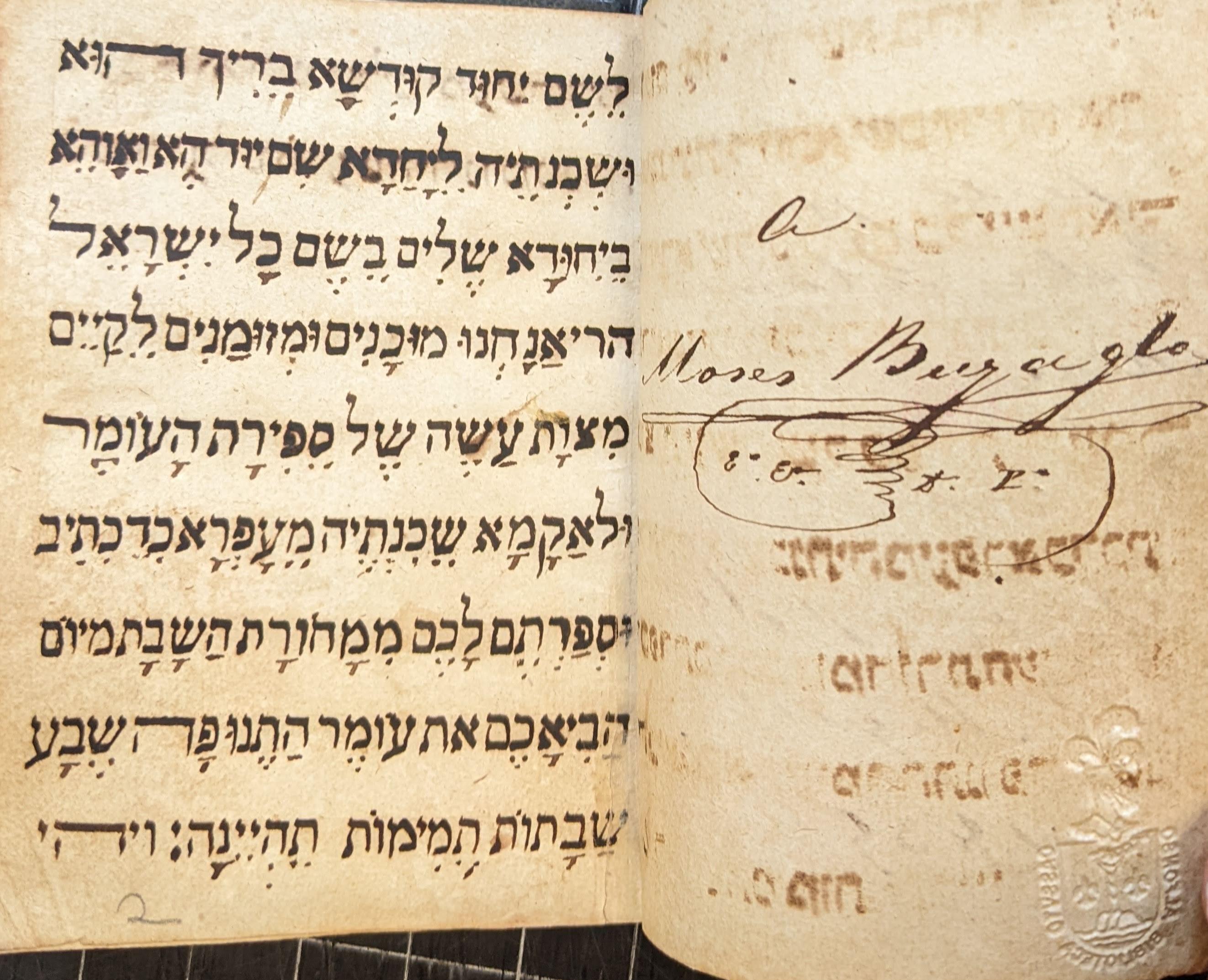Katz Center Library Acquires Collection of Rare Medieval Manuscripts
Highlights and New Additions

The library recently purchased a collection of Hebrew manuscript fragments from the former collection of Marvin L. Colker, professor of Classics at the University of Virginia. As manuscript cataloger at Trinity College, Dublin, he published the catalogue Trinity College Dublin Library: Descriptive Catalogue of the Medieval and Renaissance Latin Manuscripts (Dublin, 1991).
The collection ranges from the tenth century until the twentieth, covering a large variety of Judaic scripts, locales, subjects, and levels of fragmentation. In Penn Libraries’ Franklin catalog, they are now Rare Ms 614–642. View the catalog records here.
The collection includes many remarkable items. Here are some highlights.
Scrolls
CAJS Rar Ms 614 is a Scroll of Esther written on deerskin, likely originating from Iran during the eighteenth century. Its scalloped edges (fig. 1a) and scroll tie with olivewood rollers and supports (fig. 1b) are preserved.


CAJS Rar Ms 620 is a remarkable fragment of a fourteenth-century manuscript Bible from Spain. A distinctive feature of this manuscript is that the Scroll of Antiochus was written in the upper and lower ruled lines, where Masoretic text was normally written (fig. 2). The Scroll of Antiochus is a book from the Apocrypha composed in Aramaic. While there was a known custom during the earlier centuries to read from the scroll on Hanukkah, the inclusion of the text on the folio of a biblical text is an important piece of evidence of the practice.

Liturgy
The collection includes fragments of medieval Ashkenazic maḥzors that feature liturgy and piyyutim. A variety of layouts, scribal effects, and other visual and liturgical nuances assist the dating and placement of these fragments. CAJS Rar Ms 622 (figs. 3a and 3b) is visually striking, and the elements present in the two surviving leaves make clear that it is specifically the Bavarian Ashkenazic rite, probably executed around the year 1300.



In addition, a fragment from a German maḥzor, now CAJS Rar Ms 625 (fig. 4) dates from the mid-thirteenth century, and the surviving text is from the section for the Sabbath of the Shekalim, the first of four special Sabbaths preceding Passover. Despite it being only part of a leaf, it shows the scribal format used for the piyyut; majuscules, verses, and insertions.

A comparable manuscript of two fragments from a medieval Ashkenazic maḥzor, probably originating in the Alsace, approximately 1275–1350 (CAJS Rar Ms 640, fig. 5) shows texts from the Shavuot morning liturgy and what is known as the piyyut of the Decalogue. As these manuscripts were later cut and reused, the Latin marginal inscriptions are from later use of the parchment, dated Colmar, 1484.
Another remarkable liturgical manuscript surviving from the Middle Ages is the bifolium from the Passover maḥzor in the Roman custom, twelfth century (CAJS Rar Ms 626, fig. 6). This early manuscript of that rite contains piyyutim with attributions and customs from the earlier Byzantine liturgies (including the Haftarah in Aramaic Targum), and also survives in remarkably good condition.

Bible and Commentary
A biblical fragment—the oldest in this collection—is CAJS Rar Ms 639, fragments from a Psalter, dating from the early tenth century, probably from Syria or perhaps Israel (fig. 7). This manuscript is one of the oblong Hebrew biblical manuscripts, comprised of one book or multiple books of the Bible, of which other examples were preserved in the Cairo Geniza.

Another addition to the Katz Center Library collection from Marvin Colker’s former collection includes a folio of Isaac ben Jacob Alfasi’s halakhot to Tractate Eruvin (now CAJS Rar Ms 630), in what was originally a large folio—now cut in half with strips in the center removed, thus used in an earlier binding. It originated in Northern France during the mid-thirteenth to fourteenth century. The manuscript contains textual variants to the standard printed editions. The size of the original folio was large enough to accommodate the first three chapters of the tractate on both sides (shown in completion in fig. 8).

Another fragment (now CAJS Rar Ms 627) is from a copy of Rashi’s commentary to the Pentateuch, originating in the fourteenth century on the Iberian Peninsula (fig. 9). This manuscript was originally even taller than the aforementioned Alfasi manuscript. The first column begins with the text that refers to Rashi on Numbers 15:1, and the text of the second column begins at the end of chapter 22, suggesting that this sheet may have contained the commentary to almost the entire book of Numbers after 15!




